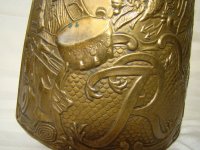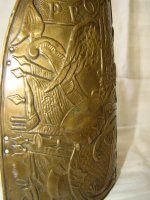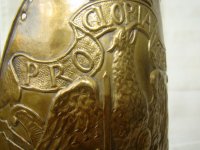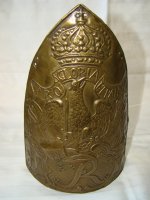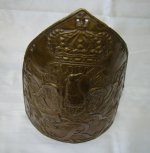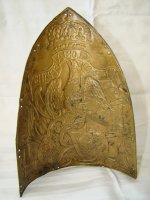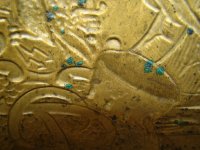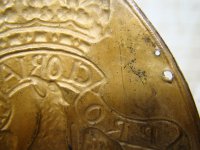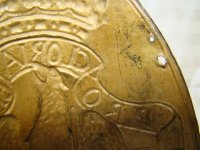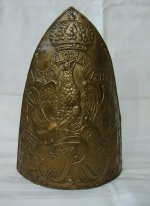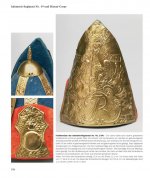Sergei1877
Active member
recently in my collection appeared headband plaque 49 fusilier regiment. This is probably one of the trophies of the Russian army during the seven-year war, which were stored in the collection of the Russian emperor Peter 3
plaque from the fusilier cap of the 49 fusilier regiment of the seven-year war.
Prussian Grenadiers
AND FUSILE Caps
from the Oranienbaum meeting of Peter III
Füsilier-Regiment von Diericke)
Created in 1741-1742 as Pio
uneven regiment. Consisted of two battalions -
nov (10 pioneer and two miner ro-
you). November 26, 1758 was transformed
to the fusilier regiment (10 fusilier mouths),
and two companies of miners were facing
formation of the miner corps.
The chief of the regiment from November 26, 1758 was
Major General Christian Fried
Rich von Dirike.
New Fusilier Hats
The regiment received later, approximately in 1759.
The regiment took an active part in
millennial war. July 23, 1759 fought
Xia at the Battle of Palzig, where, being
in the first line and repeatedly attacking,
suffered heavy losses. Few weeks
later, on August 12, the regiment participated in the beat-
at Kunersdorf, being in the second
lines and covering artillery in the rear.
However, at the end of the battle, when the regiment covered
the shaft retreat of Friedrich's army, pain-
The rest of the regiment was captured.
The remains of the regiment in October 1759.
fought against the Swedes in Pomera-
nii. In 1760, the regiment served in Saxony,
where on November 3 of the same year
small participation in the Battle of Torgau.
In 1761 and 1762 he was in the army
Prince Heinrich in Saxony.
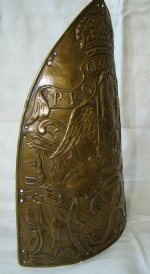
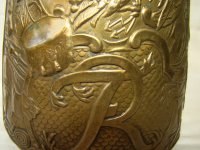
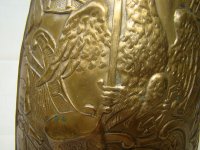
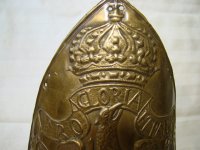
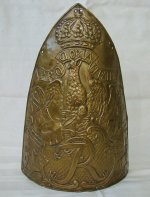
plaque from the fusilier cap of the 49 fusilier regiment of the seven-year war.
Prussian Grenadiers
AND FUSILE Caps
from the Oranienbaum meeting of Peter III
Füsilier-Regiment von Diericke)
Created in 1741-1742 as Pio
uneven regiment. Consisted of two battalions -
nov (10 pioneer and two miner ro-
you). November 26, 1758 was transformed
to the fusilier regiment (10 fusilier mouths),
and two companies of miners were facing
formation of the miner corps.
The chief of the regiment from November 26, 1758 was
Major General Christian Fried
Rich von Dirike.
New Fusilier Hats
The regiment received later, approximately in 1759.
The regiment took an active part in
millennial war. July 23, 1759 fought
Xia at the Battle of Palzig, where, being
in the first line and repeatedly attacking,
suffered heavy losses. Few weeks
later, on August 12, the regiment participated in the beat-
at Kunersdorf, being in the second
lines and covering artillery in the rear.
However, at the end of the battle, when the regiment covered
the shaft retreat of Friedrich's army, pain-
The rest of the regiment was captured.
The remains of the regiment in October 1759.
fought against the Swedes in Pomera-
nii. In 1760, the regiment served in Saxony,
where on November 3 of the same year
small participation in the Battle of Torgau.
In 1761 and 1762 he was in the army
Prince Heinrich in Saxony.






